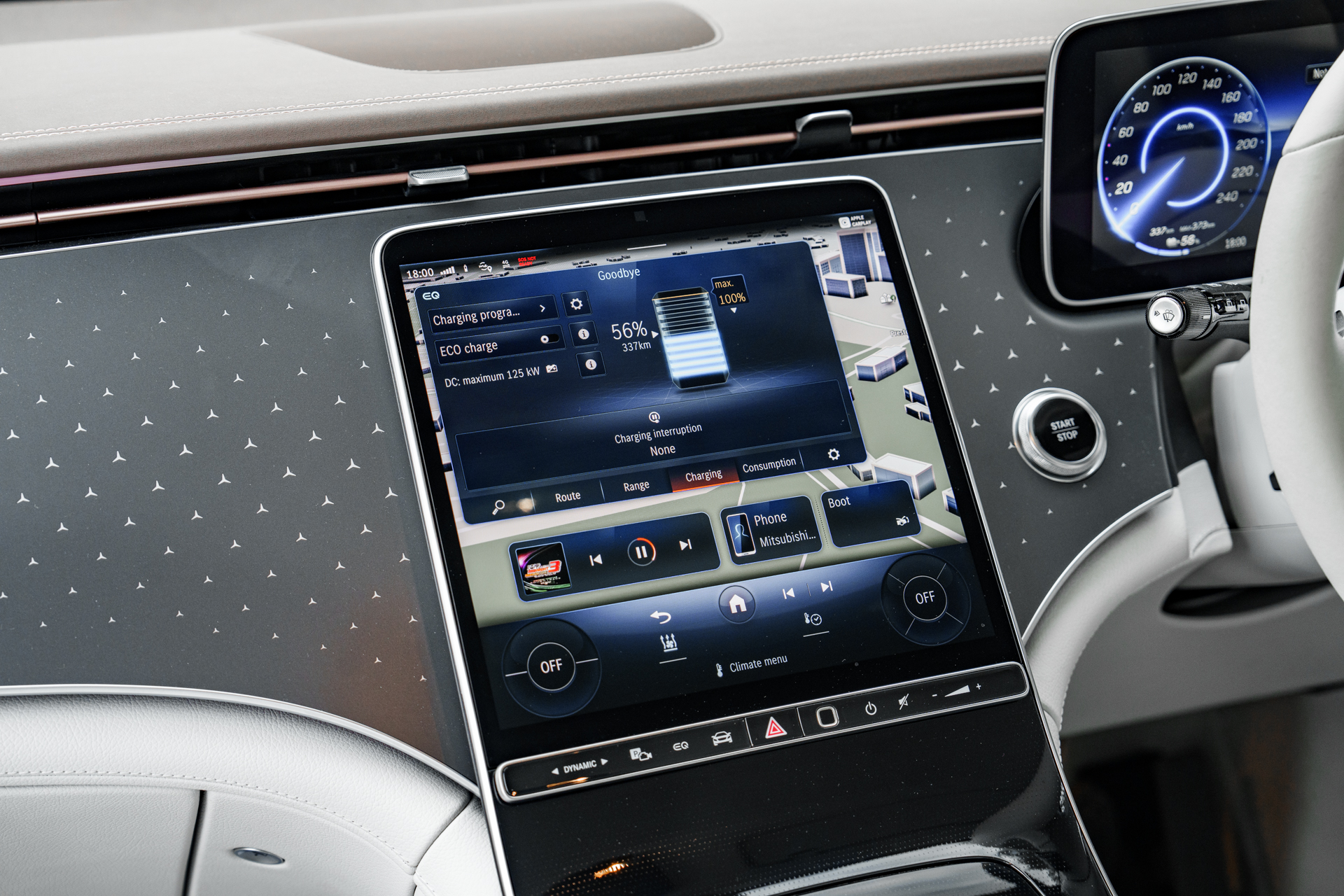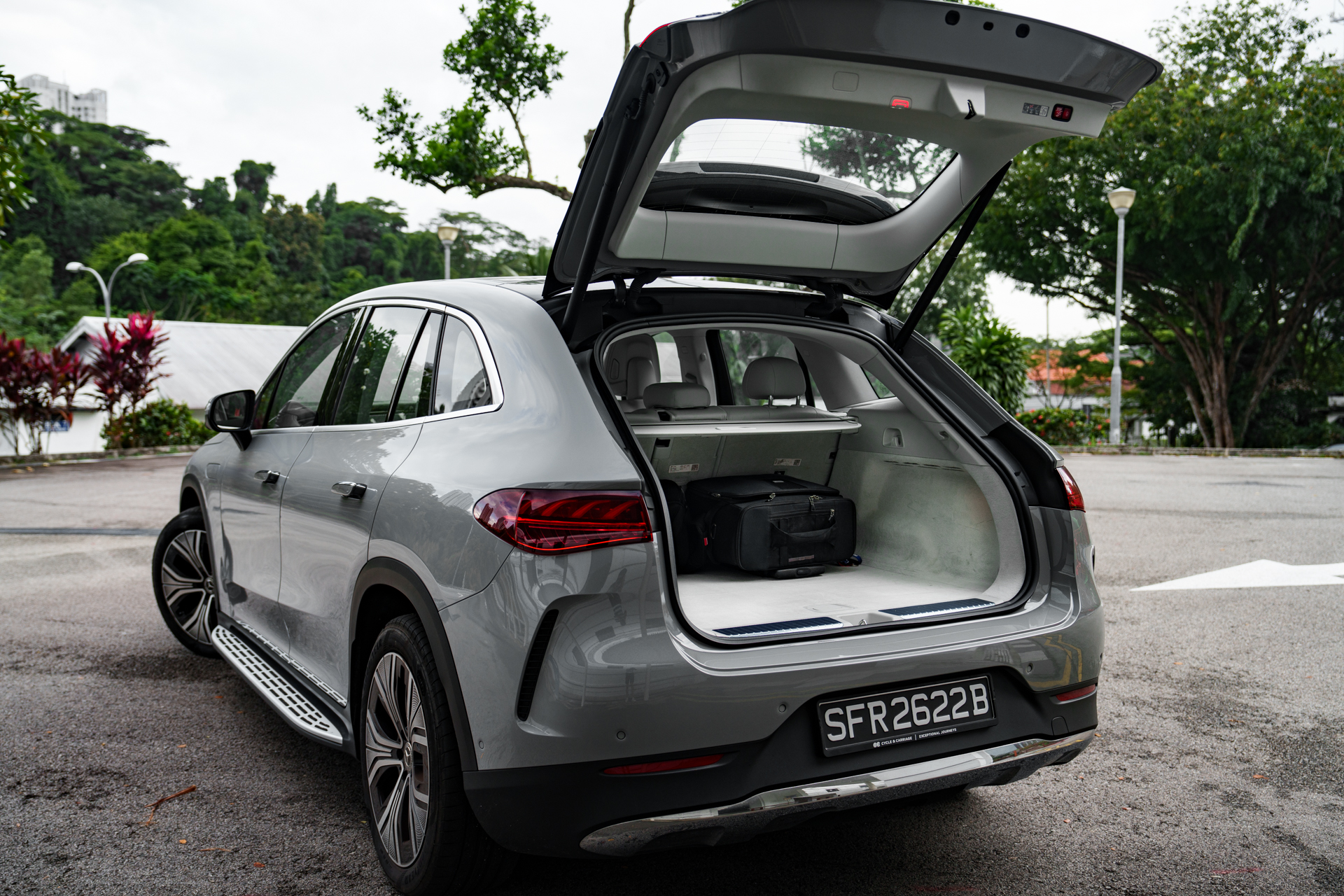The Mercedes-Benz EQE SUV is another expansion of the EQ portfolio and one that challenges its rivals head-on.
When the titans of the automotive industry, Audi, BMW, and Mercedes-Benz, announced their foray into electrification, they promised a streamlining of their model ranges, a focused approach to customer preferences, and a reduction in the number of model variants.
However, skeptics, including myself, suspected that these declarations might just be lip service, and the introduction of the Mercedes-Benz EQE SUV is a testament to this notion.

Its existence, characterised by its size, price, and specifications, seems to be a direct response to the success of BMW’s iX flagship and Audi’s Q8 E-tron.
However, the sheer number of offerings from Mercedes-Benz’s EQ lineup already gives prospective buyers plenty to choose from. So, can the EQE SUV carve its own niche from the pack? Or more importantly, can it fit in?
streamlined smoothness.

In terms of design, the EQE SUV detracts itself from its sedan counterpart. Ironically, it is lower by 4.4 inches, and more rounded, deviating from the taut lines of the sedans.
Despite being 2.4 inches shorter in length, it is nearly identical in width to its conventionally powered counterpart, the GLE.

The EQE SUV’s sleek design, coupled with its smooth underbody, contributes to an impressive drag coefficient of 0.25.

And this futuristic Macintosh-esque facade does turn plenty of heads around town.
While its appearance may not appeal to everyone, especially those who prefer a more conventional design, it is in line with its competitors like the aforementioned BMW iX and Audi e-tron, each offering its own unique take on the modern SUV concept.
luxury tuned.

The interior of the EQE SUV echoes the design of the EQE saloon, featuring high-quality materials that exude luxury and sophistication.
Stepping inside, you’re greeted by a substantial dashboard that may seem overwhelming at first thanks to its large screens and lack of buttons. Mercedes-Benz has opted for a traditional luxury approach with stitched leather and classic wood trims, contrasting BMW’s more modern material choices and designs.


While the interior is undeniably luxurious, some may find it lacking in freshness, as it mirrors most of the models in the current crop of Mercedes vehicles.
The sports steering wheel is substantial, adorned with a plethora of haptic touch buttons that may require some time to familiarize yourself with. The touchscreen interfaces are relatively user-friendly, although Mercedes’ UI may take some adjustment for those accustomed to other carmakers’ systems.
This review unit is the Electric Art trim, and comes equipped with a 12.3-inch driver display and a massive 12.8-inch central display.


Customers can even spring for the Hyperscreen in the EQE SUV, adding an additional 12.3-inch display on the passenger side. This display offers entertainment options, including games and access to streaming services through Mercedes’ subscription service.
However, Mercedes has taken measures to ensure that these entertainment features do not distract the driver. For example, the passenger display dims if the driver looks at it for more than two seconds, maintaining a focus on safety.


In terms of practicality, the EQE SUV offers ample space for passengers, with generous legroom in the back and reasonable accommodations for a middle passenger.
The flat floor in the rear provides a comfortable seating arrangement, and the added headroom thanks to the taller roofline is much more accommodating to taller folk.

With 520 litres of flat boot space with the seats up and 1,675 litres with the seats down, the EQE SUV offers competitive storage capacity, comparable to rivals such as the BMW iX and Audi Q8 e-tron.
My only slight complaint is the high boot floor, which may make heavy objects a challenge to lift.
brisk silence.

The EQE SUV from Mercedes-Benz doesn’t exactly set the road on fire with its driving dynamics, but that’s not to say it’s a slouch either. Mercedes has made efforts to highlight the car’s sporty attributes, and it handles its size well.
Mechanically, the EQE SUV is quite conventional, based on Mercedes’ Electric Vehicle Architecture and offering familiar electric powertrain components. Its aerodynamic design also makes it Mercedes’ most efficient SUV to date, featuring innovative aerodynamic elements to enhance efficiency.
The standard air suspension handles road imperfections well, maintaining consistent ground clearance. However, the suspension setup can feel a bit floaty, potentially inducing a feeling of seasickness.

Weighing in at around 2.5 tonnes, the EQE SUV’s heft is noticeable, but manageable in the corners thanks to most of its bulk being centralised in the floor of the car.
The 10-degree rear-wheel steering offers better handling too, with sharp turn-in and improved maneuverability in urban settings. This is an absolute lifesaver in U-turns and tight parking spaces.

When muscle is needed, the EQE SUV 300 can accelerate to the century marker in 7.6 seconds. This is thanks to 241bhp and a healthy 550Nm of torque at your dispoal, and the car can sit in serene bliss at a top speed of 210km/h.
Although, the brakes can be a bit grabby, but the regenerative braking system provides smart regen for one-pedal driving.

In terms of efficiency, the EQE SUV achieved around 16.9kWh/100km during my time with it, and it gave me a range of 554km.
Suffice to say, its 89kWh battery is more than sufficient for the weekly commute, and even if you do run out of juice, the EQE SUV can be charged from 10-80 per cent in just 50 minutes with a suitable 100kW charger.
sized just right.

The EQE SUV from Mercedes-Benz to me is a nice sweet spot in terms of size and practicality. However, the steep price tag might deter would-be buyers from signing on the dotted line.
That’s not to say the EQE SUV doesn’t have its merits. It boasts solid construction, a decent driving experience (if you can resist the urge to push it too hard), and really good range.
However, these qualities might not be compelling enough to justify the high price, especially when compared to more competitively priced alternatives in the market.

Despite this, the EQE SUV is a likeable and practical vehicle. It’s well-equipped, easy to live with, and offers a premium driving experience. Mercedes has packed it with advanced technology, making it both sophisticated and user-friendly. It performs admirably for its size and weight, offering a comfortable ride and competent handling.
While the EQE SUV may seem like a mere addition to Mercedes’ lineup without much innovation, it does highlight the potential benefits of larger electric vehicles. It may not be the most revolutionary electric SUV on the market, but it does showcase Mercedes’ commitment to expanding its electric vehicle offerings.
technical specifications.
Mercedes-Benz EQE SUV 300 Electric Art
Engine: Single Synchronous Motor, Rear-Wheel Drive
Power: 180kw (241bhp)
Torque: 550Nm
Gearbox: Single-Speed (A)
0-100km/h: 7.6 seconds (claimed)
Top Speed: 210km/h
Battery Capacity: 89 kWh
Drive Range: 565 km
Energy Consumption: 5.2 km/kWh (claimed)
Price: S$418,888 with COE (accurate at the time of this article)
Contact: Mercedes-Benz Singapore
Photo Credits: Sean Loo (@auto.driven)
Check out more green rides here, or check out our latest videos on Ignition Labs TV!






